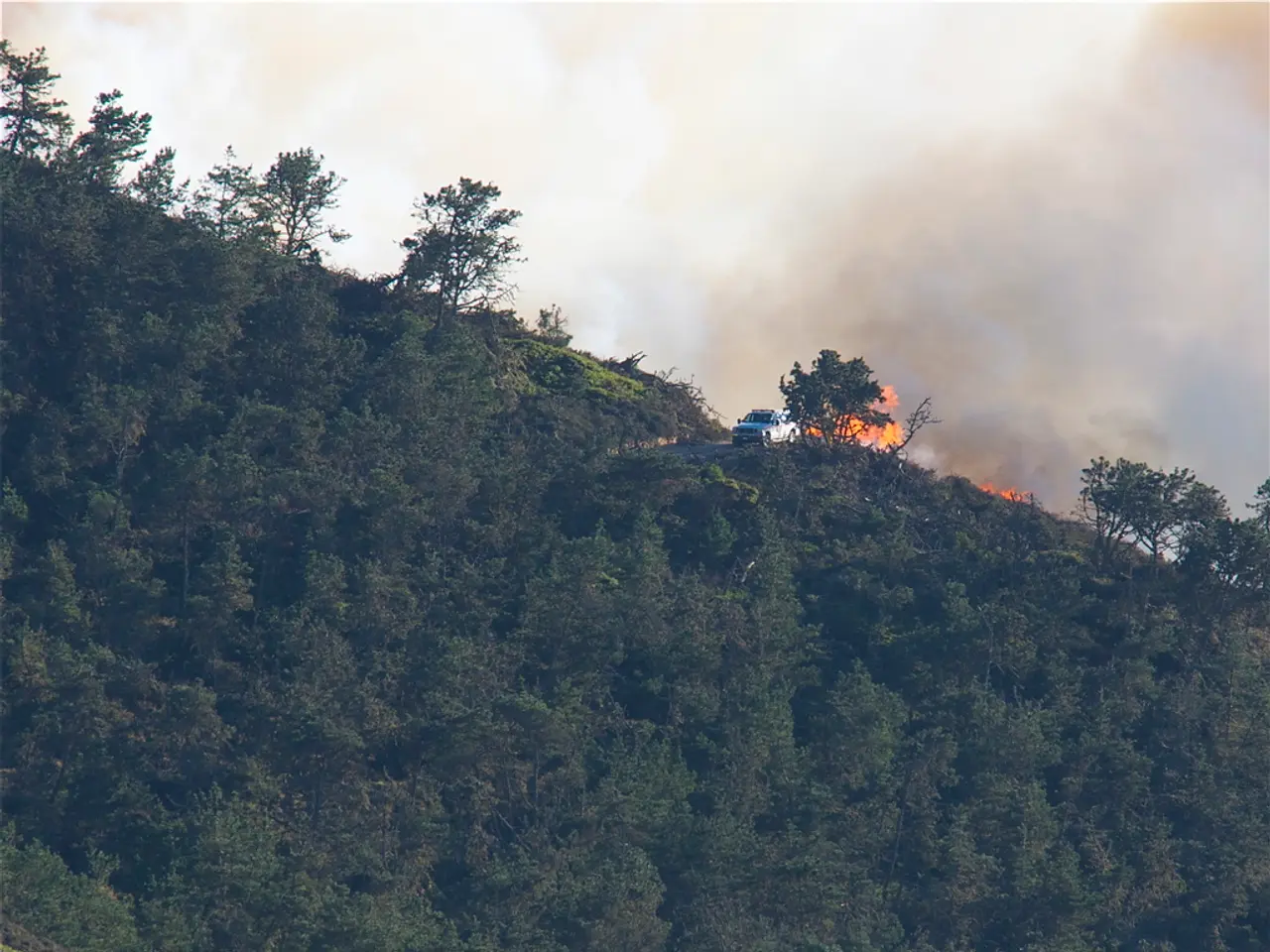In smoke-filled conditions due to wildfires, here's advice for maintaining your well-being
In recent times, wildfires in various regions of North America, including California, Arizona, and Canada, have been causing concern due to the poor air quality they are generating. A study has revealed that between 2006 and 2020, approximately 15,000 people died in the U.S. due to climate-worsened wildfire smoke [1].
The health risks associated with this wildfire smoke primarily stem from the fine particulate matter (PM2.5) in the smoke. This particulate matter can penetrate deep into the lungs and bloodstream, causing symptoms such as irritated eyes, coughing, and shortness of breath, even in healthy individuals [2][3][5]. For sensitive groups, including children, older adults, pregnant women, and people with pre-existing heart or lung diseases like asthma, the risks are significantly higher. Prolonged or heavy exposure can lead to serious health problems such as asthma attacks, heart attacks, strokes, and worsening of chronic respiratory and cardiovascular conditions [2][3][5].
To protect themselves from the effects of wildfire smoke, individuals can take several precautions:
- Monitor local air quality updates using the Air Quality Index (AQI). An AQI under 50 is considered healthy; 50-100 is moderate; 100-150 is unhealthy for sensitive groups; and above 150 unhealthy for everyone [1][4].
- Limit outdoor activities, especially strenuous exercise, when AQI is high (above 100), particularly for sensitive groups.
- Stay indoors as much as possible, keeping windows and doors closed to reduce smoke infiltration [3][4].
- Use air purifiers with HEPA filters indoors if available to improve indoor air quality.
- When going outside in poor air quality, wear a properly fitted N95 mask (or equivalent respirator) which can filter out harmful fine particles. Simple dust masks or cloth face coverings do not provide adequate protection against wildfire smoke particles [4].
- People with pre-existing heart or lung conditions should follow their healthcare provider's advice carefully and have medications on hand to manage symptoms [2][4].
- Avoid using anything that can increase indoor pollution, such as smoking, candles, or fireplaces.
With ongoing Canadian wildfires creating continued smoke transport into these regions and forecasts suggesting this pattern will persist, these health risks and precautions remain highly relevant for affected areas experiencing poor air quality [1][2][3]. It's crucial to take care even when the wildfire smoke is below a level that can be smelled or seen [5].
[1] https://www.nature.com/articles/s41586-021-03735-z [2] https://www.cdc.gov/disasters/wildfires/during.html [3] https://www.epa.gov/indoor-air-quality-wildfires [4] https://www.health.ny.gov/environmental/emergencies/wildfires/index.htm [5] https://www.ncbi.nlm.nih.gov/pmc/articles/PMC7361879/
Climate change and poor air quality due to wildfires can lead to severe health risks, particularly in sensitive groups such as children, older adults, pregnant women, and those with pre-existing heart or lung diseases. Fine particulate matter in wildfire smoke can penetrate deep into the lungs and bloodstream, causing respiratory symptoms and potentially leading to serious health problems like asthma attacks, heart attacks, strokes, and worsening of pre-existing respiratory and cardiovascular conditions. To protect themselves, individuals can monitor local air quality updates, limit outdoor activities, stay indoors, use air purifiers with HEPA filters, wear N95 masks when going outside, follow their healthcare provider's advice, and avoid increasing indoor pollution. These precautions are highly relevant in regions affected by ongoing wildfires, as the healthcare risks persist even when the smoke is below a level that can be smelled or seen.




